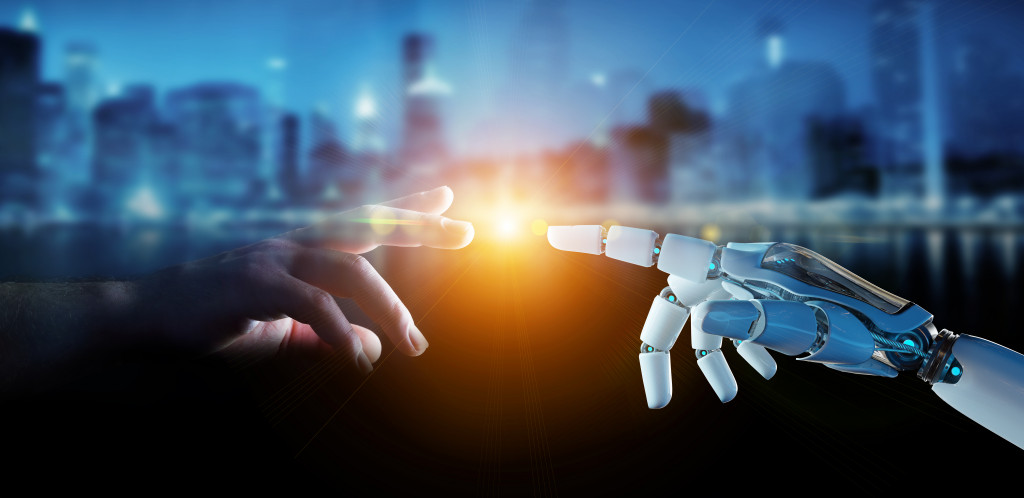- Industrial robotics can help reduce labor costs and improve productivity.
- Predictive analytics can optimize production processes and prevent equipment failures.
- 3D printing can create prototypes quickly, mass-produce items, and create replacement parts.
- AI can improve quality control, optimize production processes and predict maintenance needs.
- Planetary gearboxes can transmit power with high efficiency and accuracy.
As the industrial sector continues to grow and evolve, new technologies are emerging that can help businesses optimize their operations, improve efficiency, and reduce costs. Many tools and technologies can help businesses stay competitive in today’s rapidly changing marketplace, from advanced robotics to predictive analytics. This guide will explore five technologies that you can utilize in the industrial sector to improve your operations.
1. Industrial Robotics
Industrial robotics is one of the most important technologies in the industrial sector today. These robots are designed to perform various tasks, including assembly, welding, painting, and material handling. They can work around the clock without rest and can be programmed to perform tasks with high precision, accuracy, and speed.
One of the key benefits of industrial robotics is that it can help businesses reduce labor costs while improving productivity. They can also help improve workplace safety by taking on dangerous or difficult tasks for human workers. However, implementing industrial robotics can be a significant investment, so it’s important to carefully consider the potential benefits and costs before deciding.
2. Predictive Analytics
Predictive analytics is a technology that uses data, statistical algorithms, and machine learning techniques to identify patterns and predict future outcomes. In the industrial sector, predictive analytics can optimize production processes, prevent equipment failures, and improve supply chain management.
By analyzing data from sensors and other sources, predictive analytics can help businesses identify potential issues before they occur. This can help prevent downtime, reduce maintenance costs, and improve efficiency. Predictive analytics can also optimize production processes, such as predicting a manufacturing process’s optimal temperature or pressure settings.
3. 3D Printing

3D printing is a technology that allows businesses to create three-dimensional objects by layering materials such as plastic, metal, or ceramic. One of the key benefits of 3D printing is that it can significantly reduce production time and costs. Rather than creating molds or other tooling, businesses can simply create a digital design and print the object. This can help businesses respond more quickly to changing market demands and reduce the need for large inventories.
Here are examples of what 3D printing can be used for in the industrial sector:
Creating Prototypes
3D printing can rapidly create prototypes, allowing businesses to quickly test a product’s design and make necessary changes before investing in costly, time-consuming tooling. 3D printed prototypes are also more accurate than traditional methods such as manual fabrication or machined parts, resulting in better quality products. This makes it easier to ensure that the final product meets customer specifications.
Mass Production
Once the prototyping phase is complete, 3D printing can mass-produce various items. With the right setup and materials, companies can produce thousands of identical objects in a fraction of the time it would take using traditional manufacturing techniques. This significantly reduces the cost of production and allows businesses to meet customer demand more quickly.
Replacement Parts
In some cases, companies may need to manufacture replacement parts that are no longer available through traditional means. 3D printing can create these parts using digital models, helping businesses avoid costly delays in repairs or replacements. Additionally, 3D-printed parts can be customized to fit a specific application.
End Products
3D printing can even be used to create the final product for certain products. This is particularly useful for products with intricate internal structures or odd shapes that would otherwise require expensive tooling and machining operations. Using 3D printing, businesses can create complex objects quickly and cost-effectively. This allows them to deliver high-quality products with shorter lead times.
4. Artificial Intelligence

Artificial intelligence (AI) is a technology that uses machine learning algorithms to perform tasks that typically require human intelligence, such as perception, reasoning, and decision-making. AI can improve quality control, optimize production processes, and even predict maintenance needs in the industrial sector.
AI systems can identify patterns and predict future outcomes by analyzing sensor data. For example, an AI system might analyze data from a piece of equipment to predict when it will need maintenance or analyze images of products to identify defects. AI can also optimize production processes by predicting the optimal settings for particular manufacturing processes.
5. Planetary Gearbox
A planetary gearbox is an advanced gearbox that uses multiple gears to transmit power from one shaft to another with high efficiency and accuracy. This technology can be used in various industrial applications, such as robotics, automation, and aerospace.
By utilizing a planetary gearbox, you can achieve high torque transfer with low speed and increase the power output of motors. Additionally, planetary gearboxes are often smaller and more compact than traditional gearboxes, making them a great solution for space-constrained applications such as robotics. With its high efficiency and accuracy, the planetary gearbox is an excellent technology to utilize in the industrial sector.
To Wrap It Up
The industrial sector constantly evolves, and new technologies are always emerging to help businesses improve their operations and stay competitive in today’s marketplace. Businesses can improve efficiency, reduce costs, and optimize production processes by leveraging industrial robotics, predictive analytics, 3D printing, artificial intelligence, and planetary gearboxes. With these technologies, businesses can stay ahead of the competition and remain competitive in a rapidly changing market.







